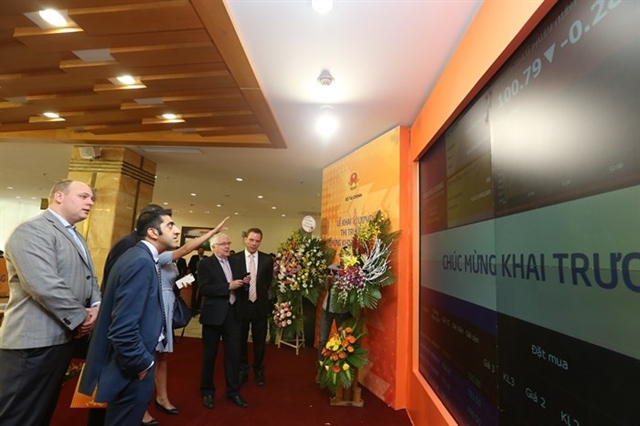 Opinion
Opinion
.jpg)
 |
| A Viettel's display booth at an international tech expo in Spain in February this year. VNA/VNS Photo |
HÀ NỘI — Việt Nam has set a new strategic goal to make fibre-optic internet available to all cities and provinces, industrial facilities and households across the country by 2030.
This means that at least two new international submarine cable routes will be launched and multiple AI-supportive data centres established that meet international standards, with a Power Usage Effectiveness (PUE) rating not exceeding 1.4.
These targets are part of a government decision on the country's digital infrastructure strategy until 2025 and orientation until 2030 signed by Deputy Prime Minister Nguyễn Hòa Bình.
Việt Nam aims for each citizen to have access to one Internet of Things (IoT) connection and one digital identity. The objective is for more than half of the country's adult population to have a digital or electronic signature. Technologies that support key fields including IoT, artificial intelligence, big data, blockchain and cybersecurity should also be developed.
By the end of 2025, the Vietnamese Government expects the 5G broadband network to cover 99 per cent of the population, with a more ambitious goal of having all Internet users use the fibre-optic connection at a speed of at least 1Gbps while preparing the system for 6G tests before deployment.
The country also has a plan to own and operate at least one more international submarine cable route and one more terrestrial route. Of these, the design capacity of the submarine cables should ensure a backup requirement of 1+2, while available capacity should be roughly three times the usual usage.
Under the plan, Việt Nam also aims to develop hyper-scale data centres, AI-supportive data centres and edge data centres to meet domestic demand and to be ready to develop regional data hubs. The number of IoT connections should reach the global average of four IoT connections per person. The goal is for more than 70 per cent of the adult population to have digital or electronic signatures by 2030.
The nation's emerging economy, one of the world's fastest, has long identified digital infrastructure as an important backbone. Việt Nam's digital infrastructure, including main components such as telecommunications and internet infrastructure, data infrastructure, physical-digital infrastructure, digital utility infrastructure and digital technology services, has been earmarked as a key pillar in its socio-economic development.
The improvement of the current 5G network should be centred around key areas including public administration, cultural and historical landmarks, major tourist hotspots, healthcare facilities, education institutes, transport hubs and commercial centres.
Policies should be designed to attract additional investment sources from both domestic and global private companies. Infrastructure must follow international standards in both technical and sustainable capacity. Meanwhile, everyday-life conveniences such as transportation, energy and water bills should be integrated as part of the digital infrastructure.
The goal is to develop a physical-digital infrastructure to ensure smooth operations, enhance productivity, optimise resource use and improve efficiency, with high-impact targets such as transport stations, hospitals, smart industrial and agriculture centres given the most priority to improve the economy's competitiveness.
Digital utility infrastructure and digital technology in the service sector should receive large investments to improve customer experience and reduce time spent on protocols and administrative tasks. New technologies should be developed to meet the needs of a new digital economy and society. — VNS
.jpg)



